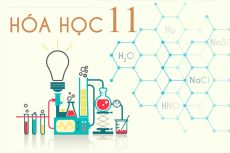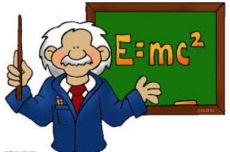Rewrite the sentence:
“Don’t forget to clean your teeth,” said Granny to Helen.
Suy nghĩ và trả lời câu hỏi trước khi xem đáp án
Lời giải:
Báo saiGiải thích: cấu trúc remind sb to V: nhắc nhở ai làm gì
Dịch: Bà bảo với Helen nhớ đánh răng.
Câu hỏi liên quan
-
Read the following passage and choose the best answer (A, B, C, D):
Industrialization has provided us with material comfort and modem (1) ____. Electrical appliances and efficient gadgets ease our daily chores. Yet, there is a heavy price tag attached to this convenience. Large-scale industrialization is killing the world. Today there is a strong emphasis on the halt of CFC usage. CFCs, otherwise known as chloro-fluoro-carbons, are ozone depleting chemicals. They (2) ____ burn a hole in the earth’s atmosphere and we, on the Earth, suffer from the strong radiation (3) ____ by the sun’s rays. Household (4) ____ like refrigerators, aerosol cans, air-conditioners and styrofoam containers contain ozone depleting chemicals. The hole in the sky allows harmful radiation to reach the Earth. As a result, the temperature on the Earth will (5) ____. This is alarming because polar ice-caps will melt in the heat. Ocean levels will rise and islands will gradually be flooded -
Mark the letter A, B, C, or D on your answer sheet to indicate the undelined part that needs correction in each of the following questions:
In the course of its history, human inventions have dramatically increased the average amount of energy available for use per person. Primitive peoples in cold regions burned wood and animal dung to heat their caves, cook food, and drive off animals by fire. The first step toward the developing of more efficient fuels was taken when people discovered that they could use vegetable oils and animal fats in lieu of gathered or cut wood. Charcoal gave off more intensive heat than wood and was more easily obtainable than organic fats. The Greeks first began to use coal for metal smelting in the 4th century, but it did not come into extensive use until the Industrial Revolution.
In the 1700s, at the beginning of the Industrial Revolution, most energy used in the United States and other nations undergoing industrialization was obtained from perpetual and renewable sources, such as wood, water streams, domesticated animal labor, and wind. These were predominantly locally available supplies. By mid-1800s, 91 percent of all commercial energy consumed in the United States and European countries was obtained from wood. However, at he beginning of the 20th century, coal became a major energy source and replaced wood in industrializing countries. Although in most regions and climate zones wood was more readily accessible than coal, the latter represents a more concentrated source of energy. In 1910, natural gas and oil firmly replaced coal as the main source of fuel because they are lighter and, therefore, cheaper to transport. They burned more cleanly than coal and polluted less. Unlike coal, oil could be refined to manufacture liquid fuels for vehicles, a very important consideration in the early 1900s, when the automobile arrived on the scene.
By 1984, non-renewable fossil fuels, such as oil, coal, and natural gas, provided over 82 percent of the commercial and industrial energy used in the world. Small amounts of energy were derived from nuclear fission, and the remaining 16 percent came from burning direct perpetual and renewable fuels, such as biomass. Between 1700 and 1986, a large number of countries shifted from the use of energy from local sources to a centralized generation of hydropower and solar energy converted to electricity. The energy derived from non-renewable fossil fuels has been increasingly produced in one location and transported to another, as is the case with most automobile fuels. In countries with private, rather than public transportation, the age of non-renewable fuels has created a dependency on a finite resource that will have to be replaced.
Alternative fuel sources are numerous, and shale oil and hydrocarbons are just two examples. The extraction of shale oil from large deposits in Asian and European regions has proven to be labor consuming and costly. The resulting product is sulfur-and nitrogen-rich, and large scale extractions are presently prohibitive. Similarly, the extraction of hydrocarbons from tar sands in Alberta and Utah is complex. Semi-solid hydrocarbons cannot be easily separated from the sandstone and limestone that carry them, and modern technology is not sufficiently versatile for a large-scale removal of the material. However, both sources of fuel may eventually be needed as petroleum prices continue to rise and limitations in fossil fuel availability make alternative deposits more attractive.What is the main topic of the passage?
-
Choose the best answer:
I tried my best in the final test, .................... the result was not as good as I expected. -
Each sentence has a mistake. Find it bychosing A B C or D
Socially has to be prepared to support its elderly people
-
Read the following passage and choose the best answer (A, B, C, D):
During the past half-century, our species has embarked on a remarkable social experiment. For the first time in human history, great numbers of people – at all ages, in all places, of every political persuasion – have begun settling down as singletons. Until the second half of the last century, most of us married young and parted only at death. If death came early, we remarried quickly; if late, we moved in with family, or they with us. Now we marry later. We divorce, and stay single for years or decades. The rise of living alone has produced significant social benefits, too. Young and middle-aged solos have helped to revitalise cities, because they are more likely to spend money, socialise and participate in public life. Contemporary solo dwellers in the US are primarily women: about 18 million, compared with 14 million men. The majority, more than 16 million, are middle-aged adults between the ages of 35 and 64. The elderly account for about 11 million of the total. Young adults between 18 and 34 number increased more than 5 million, compared with 500,000 in 1950, making them the fastest-growing segment of the solo-dwelling population. Despite fears that living alone may be environmentally unsustainable, solos tend to live in apartments rather than in big houses, and in relatively green cities rather than in cardependent suburbs. There’s good reason to believe that people who live alone in cities consume less energy than if they coupled up and decamped to pursue a single-family home.
1. The best title for this passage could be ___________ -
Read the following passage and choose the best answer (A, B, C, D):
The leaves of most plants are green, because the leaves are full of chemicals which are that colour. The most important of these chemicals is called “chlorophyll” and it (1) __________ plants to make food so they can grow using water, air and light from the sun. this way that a plant makes food for itself is called “photosynthesis” and it is one of the most important processes taking place on the (2) __________ planet. (3) __________ photosynthesis there would be no plants or people on Earth. Dinosaurs would not have been able to breathe and the air and oceans would be very different from those we have today. So the green chemical chlorophyll is really important. All leaves contain chlorophyll, but sometimes not all of the leaf has chlorophyll in it. Some leaves have green and white or green and yellow stripes or (4)______. Only the green bits have chlorophyll and only those bits can make food by photosynthesis. If you’re really good at noticing things, you might have seen plants and trees with red or purple leaves – and the leaves are that colour all year round, not just in autumn. These leaves are still full of the important green chemical, chlorophyll, just like any other ordinary green leaf. (5) _________________, they also have lots of other chemicals that are red or purple – so much of them that they no longer look green. But deep down inside the leaves, the chlorophyll is still there and it’s still green. -
Read the following passage and choose the best answer for each blank.
In the western customs (26) _____ hands is the customary form of greeting, but in China a nod of the head or (27) _____ bow is sufficient. Hugging and kissing when greeting are uncommon. Business cards are often (28) _____ and yours should be printed in your own language and in Chinese. Also, it is more respectful to present your card or a gift or any other article using (29) _____ hands. The Chinese are (30) _____ applauders. You may be greeted with group clapping, even by small children. When a person is applauded in this practice it is the custom for that person to return the applause or a "thank you." When walking in public places, direct eye (31) _____ and staring is uncommon in the larger cities, especially in those areas accustomed to foreign visitors. (32) _____, in smaller communities, visitors may be the subject of much curiosity and therefore you may notice some stares. (33) _____ speaking, the Chinese are not a touch-oriented society, especially true for visitors. So, avoid (34) _____ or any prolonged form of body contact. Public displays of affection are very rare. On the other hand, you may note people of the same sex walking hand-in-hand, which is simply a gesture of friendship. Do not worry about a bit of pushing and shoving in stores or when groups board public buses or trains. In this case, (35) _____ are neither offered or expected. The Chinese will stand much closer than Westerners.
(31) _____
-
Read the following passage and choose the best answer (A, B, C, D):
According to the report, we can expect some pretty remarkable changes to our homes and our personal spaces, overlooked things that make up so much of our daily routine. As human populations soar, our cities and homes will have to adapt; interior living spaces will change as a cloud changes, easily reconfigured and rearranged to suit our fickle tastes, or accommodate different purposes. Imagine walls and floors made of a malleable “skin,” and embedded with tiny sensors and actuators so that the shape and size of living spaces can quickly change, or even be divided into smaller rooms; imagine fully programmable “smart homes” that can be controlled remotely, and provide feedback to their owners - yes, there’ll even be an app for that. Virtual decorations will alter with changing tastes, moods and whims; and the entire interior surface of the home will be implanted with LED technology - television screens and computer displays will form and unform in any room, as needed. Even our furniture will be adaptable, molding to custom fit our bodies, responding to changes in posture, or disappearing altogether when not needed. It will be the ultimate evolution of the “Internet of Things.” Misplaced something? Can’t find your keys? No problem. Just use an online search function to find it. Hate the color of that accent wall? Delete it. Need more storage space? Watch new shelves appear, as if by magic. And the amenities are fantastic. Every home will come standard with a 3D printer; they’ll be able to churn out just about anything you could wish, using downloadable patterns, probably including even complex electronic devices. They may even print out your meals, designed and programmed by the world’s master chefs. Walk-in “medical pods,” meanwhile, will contribute to the decentralization of healthcare - their imaging sensors will diagnose your ills and, for the more easily treatable maladies, dispense drugs, inject antibiotics, and recommend health regimens. It may even be possible to undergo remote, robot-mediated surgery, in the comfort of your own home. This barely scratches the surface. Imagine homes whose very building material is salted with dormant limestone-producing bacteria, which awaken upon contact with moisture and repair any cracks or structural damage. There will be “digestion tanks” full of anaerobic bacteria, to dispose of our waste; and our homes will produce, store, and reuse their own energy, using “microbial fuel cell stacks” and more efficient solar panels to generate electricity, and power-banks like the Tesla power wall to store it against future use. Personal homes will be almost fully independent of a dangerously overtaxed energy grid. One hundred years in the future, our houses will be, in almost all respects, semiliving, artificial organisms - closed systems with a metabolism, sensory apparatus, immune response, and an approximation to a nervous system. We’ll be living in homes that are practically alive.
8. Which of the following can be inferred from the passage? -
Mark the letter A, B, C, or D on your answer sheet to indicate the undelined part that needs correction in each of the following questions:
In the course of its history, human inventions have dramatically increased the average amount of energy available for use per person. Primitive peoples in cold regions burned wood and animal dung to heat their caves, cook food, and drive off animals by fire. The first step toward the developing of more efficient fuels was taken when people discovered that they could use vegetable oils and animal fats in lieu of gathered or cut wood. Charcoal gave off more intensive heat than wood and was more easily obtainable than organic fats. The Greeks first began to use coal for metal smelting in the 4th century, but it did not come into extensive use until the Industrial Revolution.
In the 1700s, at the beginning of the Industrial Revolution, most energy used in the United States and other nations undergoing industrialization was obtained from perpetual and renewable sources, such as wood, water streams, domesticated animal labor, and wind. These were predominantly locally available supplies. By mid-1800s, 91 percent of all commercial energy consumed in the United States and European countries was obtained from wood. However, at he beginning of the 20th century, coal became a major energy source and replaced wood in industrializing countries. Although in most regions and climate zones wood was more readily accessible than coal, the latter represents a more concentrated source of energy. In 1910, natural gas and oil firmly replaced coal as the main source of fuel because they are lighter and, therefore, cheaper to transport. They burned more cleanly than coal and polluted less. Unlike coal, oil could be refined to manufacture liquid fuels for vehicles, a very important consideration in the early 1900s, when the automobile arrived on the scene.
By 1984, non-renewable fossil fuels, such as oil, coal, and natural gas, provided over 82 percent of the commercial and industrial energy used in the world. Small amounts of energy were derived from nuclear fission, and the remaining 16 percent came from burning direct perpetual and renewable fuels, such as biomass. Between 1700 and 1986, a large number of countries shifted from the use of energy from local sources to a centralized generation of hydropower and solar energy converted to electricity. The energy derived from non-renewable fossil fuels has been increasingly produced in one location and transported to another, as is the case with most automobile fuels. In countries with private, rather than public transportation, the age of non-renewable fuels has created a dependency on a finite resource that will have to be replaced.
Alternative fuel sources are numerous, and shale oil and hydrocarbons are just two examples. The extraction of shale oil from large deposits in Asian and European regions has proven to be labor consuming and costly. The resulting product is sulfur-and nitrogen-rich, and large scale extractions are presently prohibitive. Similarly, the extraction of hydrocarbons from tar sands in Alberta and Utah is complex. Semi-solid hydrocarbons cannot be easily separated from the sandstone and limestone that carry them, and modern technology is not sufficiently versatile for a large-scale removal of the material. However, both sources of fuel may eventually be needed as petroleum prices continue to rise and limitations in fossil fuel availability make alternative deposits more attractive.The phrase “the latter” refers to
-
Mark the letter A, B, C, or D on your answer sheet to indicate the undelined part that needs correction in each of the following questions:
Under certain circumstances, the human body must cope with gases at greater-than-normal atmospheric pressure. For example, gas pressures increase rapidly during a drive made with scuba gear because the breathing equipment allows divers to stay underwater longer and dive deeper. The pressure exerted on the human body increases by 1 atmosphere for every 10 meters of depth in seawater, so that at 39 meters in seawater a diver is exposed to pressure of about 4 atmospheres. The pressure of the gases being breathed must equal the external pressure applied to the body,otherwise breathing is very difficult. Therefore all of the gases in the air breathed by a scuba diver at 40 meter are present at five times their usual pressure. Nitrogen, which composes 80 percent of the air we breathe, usually causes a balmy feeling of well-being at this pressure. At a depth of 5 atmospheres, nitrogen causes symptoms resembling alcohol intoxication, known as nitrogen narcosis. Nitrogen narcosis apparently results from a direct effect on the brain of the large amounts of nitrogen dissolved in the blood. Deep dives are less dangerous if helium is substituted for nitrogen, because under these pressures helium does not exert a similar narcotic effect.
As a scuba diver descends, the pressure of nitrogen on the lungs increases. Nitrogen then diffuses from the lungs to the blood, and from the blood to body tissues. Nitrogen then diffuses from the lungs to the blood, and from the blood to body tissues The reverse occurs when the diver surfaces, the nitrogen pressure in the lungs falls and the nitrogen diffuses from the tissues into the blood, and from the blood into the lungs. If the return to the surface is too rapid, nitrogen in the tissues and blood cannot diffuse out rapidly enough and nitrogen bubbles are formed. They can cause severe pains, particularly around the joints.
Another complication may result if the breath is held during ascent. During ascent from a depth of 10 meters, the volume of air in the lungs will double because the air pressure at the surface is only half of what it was at 10 meters. This change in volume may cause the lungs to distend and even rupture. This condition is called air embolism.
To avoid this event, a diver must ascend slowly, never at a rate exceeding the rise of the exhaled air bubbles, and must exhale during ascent.What does the passage mainly discuss?
-
Read the following passage and choose the best answer (A, B, C, D):
Around the world, Rio de Janeiro is famous for its beautiful beaches, and Carnival celebration. But the city is also known for its poor areas, known as favelas. For years, many favelas had high poverty and crime rates. However, things are starting to change. In the past, many favelas received very little government assistance. Neighbourhood residents had to build their own streets and homes. Gangs were also common, and so were guns. However, a new government plan is starting to change this. The city is sending thousands of police officers into favelas with the goal of driving out the gangs. In some favelas, the plan is already working. Crime is down, and unlike the past, children are playing in the streets again. New apartment buildings are being built, and the city is providing more services. “In 20 years,’ says police officer Leonardo Nogueira, “the children who live here now will be different people.” Police influence is changing the favelas, but something else is, too. Today, more Brazilians are moving into these neighbourhoods because housing is expensive in other parts of Rio. “Favelas are a place for young doctors without money to get started and young architects to start working,” explains Simone Miranda, a Rio tour guide. In the past, favela residents felt different – separate from the rest of Rio. “But now,” says Miranda, “they feel part of the society of Brazil.” Life is improving in the favelas, but there are still challenges. In some areas, poverty rates are still high. As students, families, and foreigners move into the favelas, property costs skyrocket. In some areas, housing has more than doubled in price. Despite this, favela residents are hopeful. If Rio can develop these favelas for all residents – both poor and middle class the city could become a model for other cities with similar problems.
5. What is true about the future of favelas? -
Choose the best answer:
How many .................... of leaves does a Hue’s conical hat have? -
Read the following passage and choose the best answer (A, B, C, D):
Hundreds of years ago, life was harder than it is today. People didn’t have modern machines. Yet life today has brought new problems. One of the biggest is pollution. Water pollution has made our rivers and lakes dirty. It kills our fish and pollutes our drinking water. Noise pollution makes us talk (1)______ and become angry more easily. Air pollution is the most serious kind of pollution to all living things in the world. Cars, planes and factories all pollute our air every day. Sometimes the polluted air is (2)________thick that it is like a quilt over a city. This kind of quilt is called smog. Many countries are making rules to fight pollution. Factories must now (3)______ their water before it is thrown away, and they mustn’t let dirty smoke go into the air. We need to do many other things. We (4)_______ put waste things in the dustbin and do not throw them on the ground. We can go to work by bus with our friends in the (5)________car. If there are fewer people driving, there will be less pollution. Rules are not enough. Every person must help to fight pollution -
Read the following passage and choose the best answer (A, B, C, D):
Leisure reading, also known as recreational reading, pleasure reading, free voluntary reading, and independent reading, is independent, self-selected reading of a continuous text for a wide range of personal and social (1)__________. It can take place in and out of school, at any time. Readers (2)__________from a wide range of extended texts, including but not exclusive to narrative fiction, nonfiction, picture books, e-books, magazines, social media, blogs, websites, newspapers, comic books, and graphic novels. Leisure reading is (3)_______intrinsically or socially motivated and a pleasurable activity for the reader. Students’ home environment, where parents/caregivers encourage reading and model their enjoyment of reading, has a substantial (4)___________impact on children’s performance in reading. In classrooms, leisure reading often takes place during times designated as SSR (sustained silent reading), DEAR (drop everything and read), LTR (love to read), or POWER (providing opportunities with everyday reading), which are the most common terms for classroom leisure reading. It may take place (5) _____individual classrooms or be part of a school-wide activity -
Read and complete the following passage.
"Nowadays people are more aware that wildlife all over the world is in (1)________. Many species of animals are threatened, and could easily become (2)________ if we do not make an effort to protect them. In some cases, animals are hunted for their fur or for other valuable parts of their bodies. Some birds, such as parrots, are caught (3)________and sold as pets. For many animals and birds the problem is that their habitat - the place where they live - is disappearing. More land is used for farms, for houses or industry, and there are fewer open spaces than there once were. Farmers use powerful chemicals to help them to grow better crops, but these chemicals pollute the environment and (4)________ wildlife. The most successful animals on earth - human beings - will soon be the only ones (5)________, unless we can solve this problem."
4. Farmers use powerful chemicals to help them to grow better crops, but these chemicals pollute the environment and (4)________ wildlife.
-
Read the following passage and choose the best answer (A, B, C, D):
Although television was first regarded by many as “radio with pictures,” public reaction to the arrival of TV was strikingly different from that afforded the advent of radio. Radio in its early days was perceived as a technological wonder rather than a medium of cultural significance. The public quickly adjusted to radio broadcasting and either enjoyed its many programs or turned them off. Television, however, prompted a tendency to criticize and evaluate rather than a simple on-off response. One aspect of early television that can never be recaptured is the combined sense of astonishment and glamour that greeted the medium during its infancy. At the midpoint of the 20th century, the public was properly agog about being able to see and hear actual events that were happening across town or hundreds of miles away. Relatively few people had sets in their homes, but popular fascination with TV was so pronounced that crowds would gather on the sidewalks in front of stores that displayed a working television set or two. The same thing happened in the typical tavern, where a set behind the bar virtually guaranteed a full house. Sports events that might attract a crowd of 30,000 or 40,000 suddenly, with the addition of TV cameras, had audiences numbering in the millions. By the end of television’s first decade, it was widely believed to have greater influence on American culture than parents, schools, churches, and government-institutions that had been until then the dominant influences on popular conduct. All were superseded by this one cultural juggernaut. The 1950s was a time of remarkable achievement in television, but this was not the case for the entire medium. American viewers old enough to remember TV in the ’50s may fondly recall the shows of Sid Caesar, Jackie Gleason, Milton Berle, and Lucille Ball, but such high-quality programs were the exception; most of television during its formative years could be aptly described, as it was by one Broadway playwright, as “amateurs playing at home movies.” The underlying problem was not a shortage of talented writers, producers, and performers; there were plenty, but they were already busily involved on the Broadway stage and in vaudeville, radio, and motion pictures. Consequently, television drew chiefly on a talent pool of individuals who had not achieved success in the more popular media and on the young and inexperienced who were years from reaching their potential. Nevertheless, the new medium ultimately proved so fascinating a technical novelty that in the early stages of its development the quality of its content seemed almost not to matter. Fortunately, the dearth of talent was short-lived. Although it would take at least another decade before areas such as news and sports coverage approached their potential, more than enough excellence in the categories of comedy and drama emerged in the 1950s to deserve the attention of discriminating viewers. They are the most fondly remembered of the Golden Age genres for both emotional and intellectual reasons. Live TV drama was, in essence, the legitimate theatre’s contribution to the new medium; such shows were regarded as “prestige” events and were afforded respect accordingly. The comedies of the era are remembered for the same reason that comedy itself endures: human suffering and the everelusive pursuit of happiness render laughter a necessary palliative, and people therefore have a particular fondness for those who amuse them
2. The phrase “agog about” in paragraph 2 can be best replaced by _____ -
Read the following passage and choose the best answer (A, B, C, D):
Prosthetic body parts have been around in many shapes and forms for thousands of years. But up until just a few decades ago, they were often uncomfortable, provided little to no control for the user and didn’t look all that great either. Fast-forward to the present day and thanks to advances in medicine, robotics and neuroscience, a number of bionic body parts have been developed that have the power to be truly life-changing for those who need them the most, from a bionic eye to an artificial kidney to a thought-controlled robotic leg. Many of these bionic body parts are still in the early stages of production and are far from being rolled out to those that need them. That’s because there are all kinds of challenges to consider – not only the materials the body part is made from, but also integrating it into our bodies so it isn’t rejected, as well as developing ways for it to become part of our nervous system, so it behaves like any other limb or organ. Add to that the huge raft of financial, ethical, moral and political implications of enhancing our bodies with the help of technology. But it’s easy to overlook all of these concerns when the tech sounds so exciting, promising and like the robotic hands, arms and whole bodies of our sci-fi dreams. “The public perception of bionics is vastly different from the reality of prosthetics,” Kia Nazarpour, director of expertise in bio and environmental engineering, at Newcastle University, told us. "That’s thanks to science writers and researchers who showcase their work in a sci-fi oriented way to increase publicity."
4. According to paragraph 2, what is NOT one of the problems encountered by bionic technology? -
Read the following passage and choose the best answer (A, B, C, D):
Overpopulation is an undesirable condition where the number of existing human population exceeds the carrying capacity of Earth. Overpopulation is caused by number of factors. Reduced mortality rate, better medical facilities, depletion of precious resources are few of the causes which results in overpopulation. It is possible for a sparsely populated area to become densely populated if it is not able to sustain life. The effects of overpopulation are quite severe. The first of these is the depletion of resources. The Earth can only produce a limited amount of water and food, which is falling short of the current needs. Most of the environmental damage being seen in the last fifty odd years is because of the growing number of people on the planet. They are cutting down forests, hunting wildlife in a reckless manner, causing pollution and creating a host of problems. Those engaged in talking about overpopulation have noticed that acts of violence and aggression outside of a war zone have increased tremendously while competing for resources. With the overuse of coal, oil and natural gas, it has started producing some serious effects on our environment. Rise in the number of vehicles and industries have badly affected the quality of air. Rise in amount of CO2 emissions leads to global warming Overpopulation is an undesirable condition where the number of existing human population exceeds the carrying capacity of Earth. Overpopulation is caused by number of factors. Reduced mortality rate, better medical facilities, depletion of precious resources are few of the causes which results in overpopulation. It is possible for a sparsely populated area to become densely populated if it is not able to sustain life. The effects of overpopulation are quite severe. The first of these is the depletion of resources. The Earth can only produce a limited amount of water and food, which is falling short of the current needs. Most of the environmental damage being seen in the last fifty odd years is because of the growing number of people on the planet. They are cutting down forests, hunting wildlife in a reckless manner, causing pollution and creating a host of problems. Those engaged in talking about overpopulation have noticed that acts of violence and aggression outside of a war zone have increased tremendously while competing for resources. With the overuse of coal, oil and natural gas, it has started producing some serious effects on our environment. Rise in the number of vehicles and industries have badly affected the quality of air. Rise in amount of CO2 emissions leads to global warming
5. The word "affected" in paragraph 3 can be best replaced by ______ -
Mark the letter A, B, C, or D on your answer sheet to indicate the undelined part that needs correction in each of the following questions:
The human criterionfor perfect vision is 20/20 for reading the standard lines on a Snellen eye chart without a hitch. The score is determined by how well you read lines of letters of different sizes from 20 feet away. But being able to read the bottom line on the eye chart does not approximate perfection as far as other species are concerned. Most birds would consider us very visually handicapped. The hawk, for instance, has such sharp eyes that can spot a dime on the sidewalk while perched on top of the Empire State Building. It can make fine visual distinctions because it is blessed with one million cones per square millimetre in its retina. And in water, humans are farsighted, while the kingfisher, swooping down to spear fish, can see well both in the air and water because it is endowed with two foveae – areas of the eyes, consisting mostly of cones that provide visual distinctions. One foveae permits the bird, while in the air, to scan the water below with one eye at a time. This is called monocular vision. Once it hits the water, the other foveae joins in, allowing the kingfisher to focus both eyes, like binoculars, on its prey at the same time. A frog’s vision is distinguished by its ability to perceive things as a constant moving picture. Known as “bug detectors”, a highly developed set of cells in a frog’s eyes responds mainly to moving objects. So, it is said that a frog sitting in a field of dead bugs wouldn’t see them as food and would starve.
The bee has a “compound” eye, which is used for navigation. It has 15,000 facets that divide what it sees into a pattern of dots, or mosaic. With this kind of vision, the bee sees the sun only as a single dot, a constant point of reference. Thus, the eye is a superb navigational instrument that constantly measures the angle of its line of flight in relation to the sun. A bee’s eye also gauges flight speed. And if that is not enough to leave our 20/20 “perfect vision” paling into insignificance, the bee is capable of seeing something we can’t – ultraviolet light. Thus, what humans consider to be “perfect vision” is in fact rather limited when we look at other species. However, there is still much to be said for the human eye. Of all mammals, only humans and some primates can enjoy pleasures of colour vision.Which of the following can be inferred from the passage?
-
Read the following passage and choose the best answer (A, B, C, D):
When you volunteer, it might be one of the best ways to gain hands-on experience for a future career. And giving a (1) ________________ hand to a community won’t just result in great networking opportunities but the experience can also be a great addition to your skill set and CV. With each new volunteering job comes training with a different (2) ________________ of skills. These skills might seem basic and unhelpful while training but can become a great benefit soon. If you develop new abilities, it’ll help set you (3) _______________ in the job market. It can also make you more productive and successful. Volunteering broadens your experience and exposure to life. And it won’t just help you make a difference in a community, it’ll (4) _________ help you on a personal level. Are you planning on becoming a nurse or doctor? Volunteer at your local hospital. Are you following a career in environmental science? Find a (5)______________________ restoration programme. This is the perfect opportunity to gain essential leadership experience that all employers want to see











